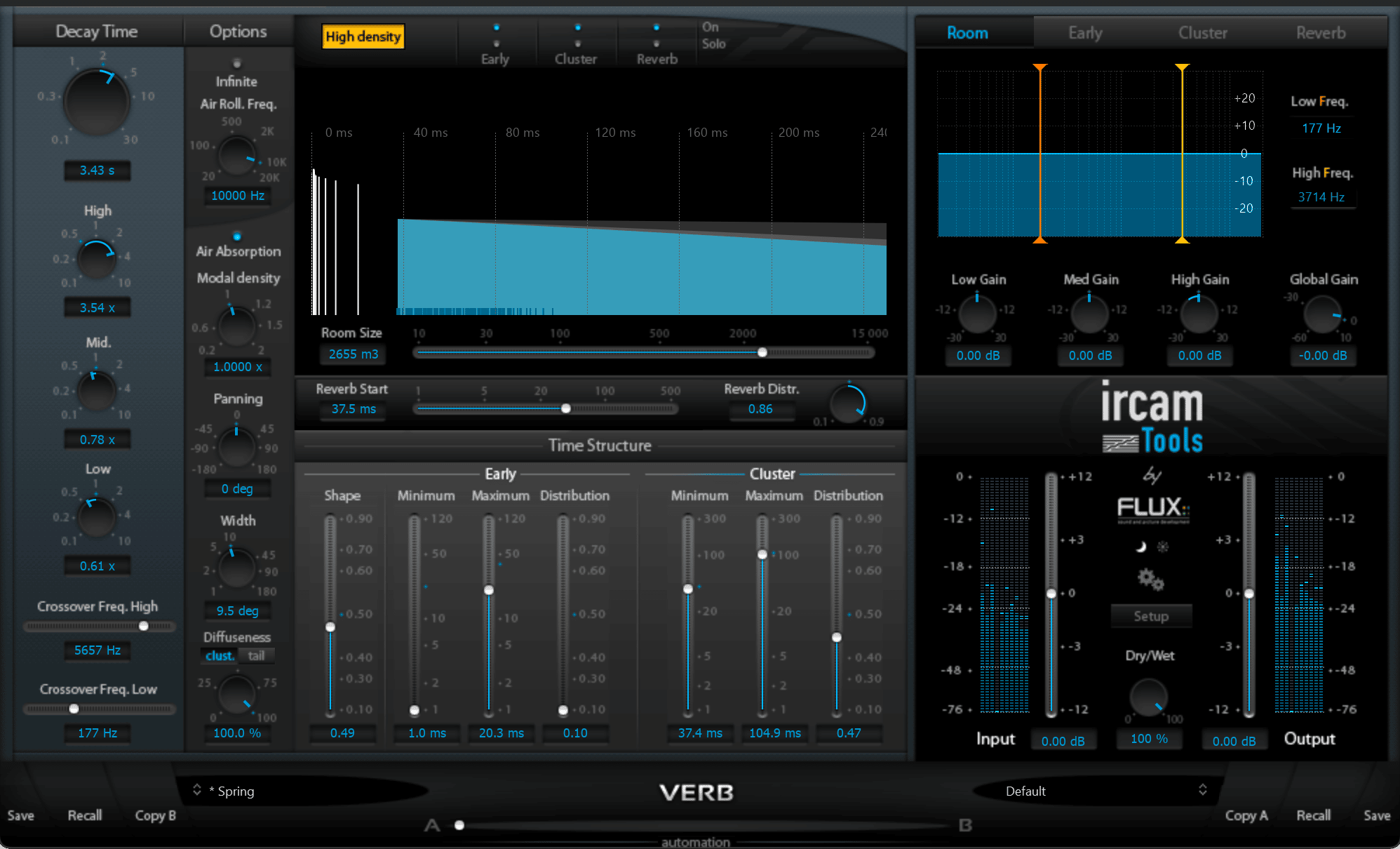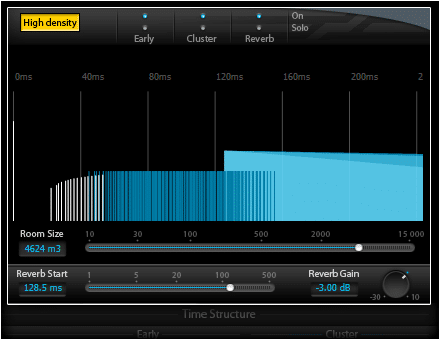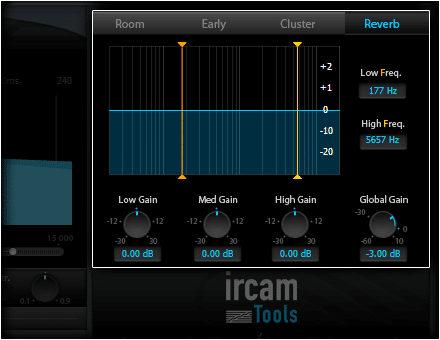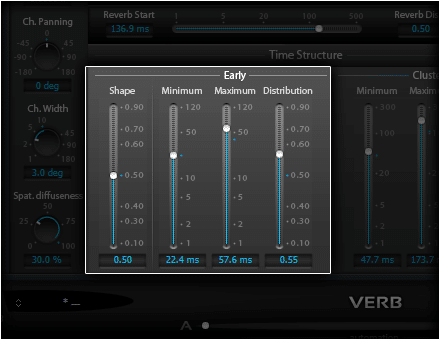Bring Acoustic Simulation To Your Immersive Mix!
Halfway between reverberation and a spatialization engine – The state-of-the-art in room acoustics simulation and reverberation, be it a simple Quad, an Ambisonics, or a Dolby Atmos® deliverable, IRCAM Verb brings together multichannel reverberation with spatialization to create realistic acoustic environments for your mix soundscape!
Tutorial – Introduction To Ircam Verb
Tutorial – Using The Advanced Parameters of Ircam Verb
Tutorial – Using Ircam Verb For Atmos® Mixing
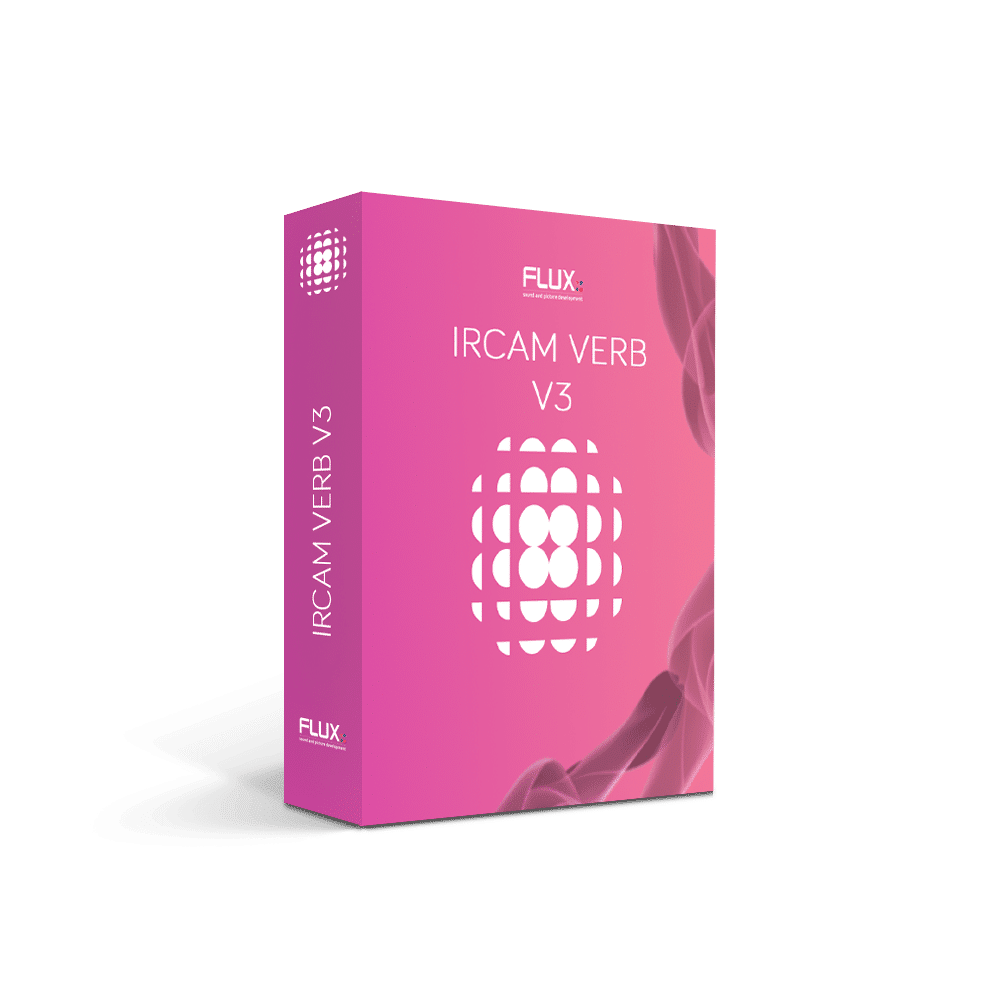
Ircam Verb
Ircam Research Center – State of the art room acoustics simulation and reverberation, advanced perceptive models providing an intuitive user experience.
The Ircam Verb license now includes the Ircam Verb Session 2 channel version as well.
*We offer a 50% academic discount, based on the full MSRP, for students, teachers and schools on all our products. Click here to apply.
All Features
- Up to 16 channels Input/Output with support for Dolby Atmos®
- Pro Tools HD 7.1.2 & 7.0.2 Dolby Atmos® and 3rd order bus Support
- Channel Routing Matrix for routing the I/O channels depending on the actual control room monitor setup (for surround/multichannel use).
- Input/Output Gain (-/+ 12 dB) for adjusting the levels before and after processing.
Read more ...
- Dry/Wet control for blending the original signal with the processed signal.
- True bypass control routing the incoming signal direct to the output for a smooth transition between clean and processed signal
- Graphical representation of Early, Cluster and Reverb. Room Size.
- High density setting for selecting standard/high density reverberation engine.
- Decay Time controls for adjusting the decay time as well as the relative decay time of the
High/Mid/Low frequencies explicitly. - A set of 3-band filters applied to each part of the time structure for fine tuning the reverberation characteristics.
- Creative Perceptual Reverb Options parameters;
Infinite (“deep-freezing” the reverb)
Air Absorption/Roll Freq. simulates the frequency dependent air absorption.
Modal Density, the frequency “smoothness” of the reverb engine
Panning, virtual source panning-direction offset
Width, panning width
Diffuseness, the directional information of the reverberation. - Open Sound Control Support
Preset and Parameter Handling
- Preset/Parameter slots
To enhance the workflow the two Preset/Parameter slots, A and B, can be loaded with two full set of parameters at the same time. Apart from saving each preset, a “Global Preset” containing both the A and B settings, and the position of the “Morphing Slider”, can be saved.
Read more ...
- Parameter Morphing Slider with Automation
The Morphing Slider provides morphing between the parameter settings of slot A/B allowing for really creative and useful real-time tweaking. Enabling the Automation control button exposes the Morphing Slider to the host automation.
Compatibility




Channel Routing Matrix
Ircam Verb provides 16 input and output channels presenting the option for reverberation processing in multi-channel and surround formats, including Ambisonics and Dolby Atmos®.
With a built in Input/Output (I/O) routing matrix instant flexibility is provided for configuring the I/O in relation to the physical audio monitoring in the control room.
General Reverb Controls and Display
Graphical representation of the Early, Cluster and Reverb with controls for High density (standard/high density reverberation engine), Early, Cluster and Reverb On/Solo controls, and Room Size, Reverb Start and Reverb Gain controls.
Reverb Options
Creative reverb options including; Infinite (“deep-freezing” the reverb). Air Absorption/Roll Freq. simulates the frequency dependent air absorption. Modal Density, the frequency “smoothness” of the Verb engine. Panning, virtual source panning-direction offset. Width, panning width. Diffuseness, the directional information of the reverberation.
Reverb Options
Creative reverb options including; Infinite (“deep-freezing” the reverb). Air Absorption/Roll Freq. simulates the frequency dependent air absorption. Modal Density, the frequency “smoothness” of the Verb engine. Panning, virtual source panning-direction offset. Width, panning width. Diffuseness, the directional information of the reverberation.
Early (Time Structure)
Early Time Structure controls, with Early shape controlling the amplitude rise or fall of early reflections, Early Min controlling the time at which the early reflections start to appear, Early Max controlling the time at which the early reflections cease to appear and Early Distribution controlling the way early reflections are scattered in time.
Cluster (Time Structure)
Cluster Time Structure controls, with Cluster Min controlling the time at which the Cluster start to appear, Cluster Max controlling the time at which the Cluster cease to appear and Cluster Distribution controlling the way the Cluster is scattered in time.
Dual Preset Slots and Parameter Morphing
The built in preset manager and the preset morphing slider, provides instant and intuitive control of all parameters and controls. In a second, with a simple one-click operation, everything is copied from one of the two preset slots to the other, even during playback.
The two Preset/Parameter slots, A and B, can be loaded with two full set of parameters at the same time, and except for only A/B comparing two sets of parameters, the morphing slider will allow to mix them, and to record the morph with the host automation.

